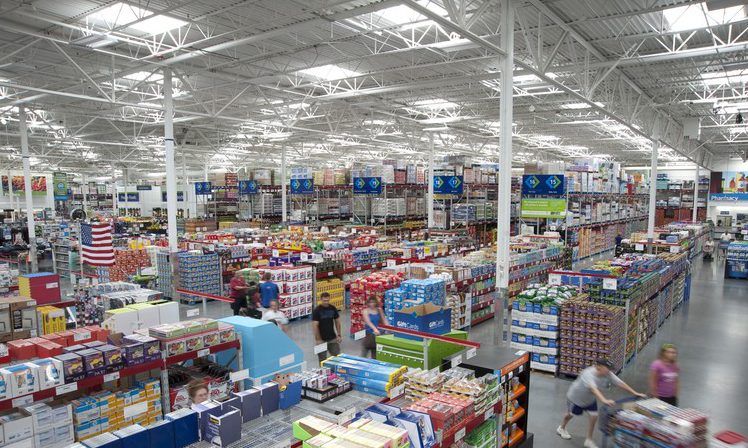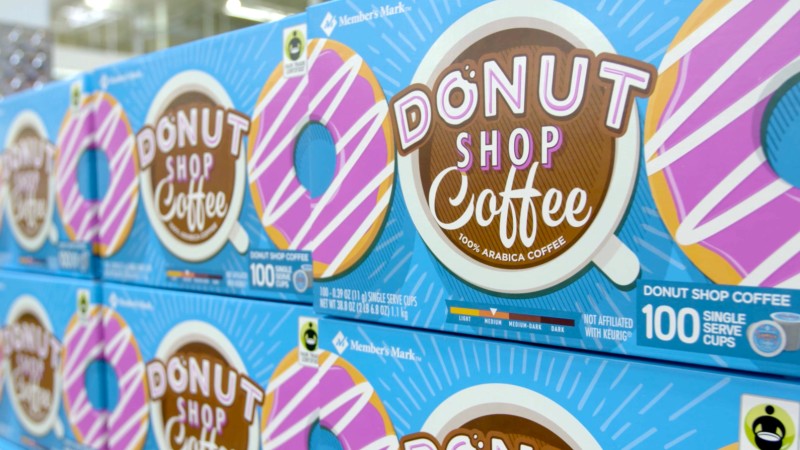Opportunities in Club Store Packaging
April 23, 2018 - by David Kirkpatrick
CPG companies understand the issues around designing product packaging destined for club stores. Each store — such as Costco, Sam’s Club and BJ’s – has its own specific requirements and rules around packaging, including durability, size issues around pallet dimensions, and even forcing CPGs to carry liability insurance (in the case of Sam’s Club).
These constraints, along with the challenge of addressing the unique nature of club store merchandising, has led to a perception that club packaging is more about following rules and displaying items in bulk than about innovation and new packaging opportunities. In reality, being forced to operate under strict constraints can often lead to greater design creativity, and club store packaging is no exception to that rule.

The pallet skirt as a billboard
The fundamental difference in club store versus traditional retail packaging is instead of creating individual units with shelf appeal, with club stores the shipping containers will often end up doing double duty as the display packaging.
Along with the shipping container serving as display packaging, in-store pallets will possibly include pallet skirts on all four sides. These expanses of display real estate offer designers a large canvas to create visuals and offer consumers messaging that simply isn’t available in traditional retail merchandising.
Instead of thinking about shelf appeal, the club store pallet-based product display offers CPG companies dedicated billboard space right at the display point. One rule of thumb for taking advantage of this space is club packaging should visually communicate within five seconds from five feet away. And the popular billboarding tactic of designing multiple facings to create a continuous theme of design elements is even more potent on the larger club store scale and its wraparound pallet skirts.
Collaboration opportunities
Another area where club constraints can actually become a positive is collaboration between vendors and buyers. Because each club store has its own specific regulations and even different sized pallets for merchandise, there is a close relationship between CPG vendors and club store buyers. Instead of offering products to be shelved in a traditional retail environment, vendors and buyers must work more closely to ensure the display packaging meets that club chain’s specific requirements.
This closer relationship offers vendors and buyers the opportunity to collaborate on packaging options that aren’t available in traditional CPG packaging. Another benefit for vendors is a solid relationship with a club chain’s buyer will keep them in loop on any upcoming changes in policy or packaging regulations.
“Savvy vendors and buyers work together to develop creative solutions to enhance the member experience: variety packs or exclusive flavors, resealability and even solution/kit packaging – such as Hershey S’Mores kits — are actually improvements over non-club packaging, and ‘break the compromise’ for members between bulk and value,” explained Pete Killian, partner at Vivaldi.
Finally, while taking advantage of club store opportunities, designers should keep in mind the four basic elements for packaging success:
- Simplicity – achieved through color blocking and focusing on brand iconography
- Value – through an emphasis on savings
- Optimism – through upbeat visuals in an otherwise utilitarian space
- Experience – by reminding consumers of the unique club store setting
- < Previous How Cognitive Biases are Influencing The Way Shoppers Buy and Experience Products
- Next > Revisiting Packaging Storytelling




